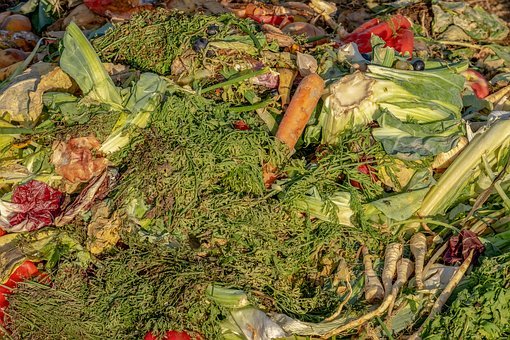There’s a lot of interest in composting these days. If you haven’t yet tried it, here’s a short synopsis on what it is, why it’s worthwhile, and various options for becoming a composter, or at least adopting compost as part of your gardening methodology.
Most of us who live in the Northeast welcome the change of seasons, and by the time summer comes to a close, we’re sated from the challenges of our gardens. They’ve provided lots of beauty – and labor – for us, and we’re ready to close down some of the work, relax and read seed catalogs for a few months!
One of the things we can be doing 12 months a year, however, is composting. This is the process of retaining all the good nutrients in whatever we’ve grown or prepared in our kitchens or on our properties to return to the Earth as our gift for the bounty we enjoy from the services of the soil, water, air and microorganisms.
As kids, the game of Twenty Questions we used to play asked ‘Animal, Vegetable or Mineral?’ as a way to classify a mysterious object. For the question What is Compost? the answer is ‘All of Those make up compost!’ Through composting we recognize that all living things are made up of nutrients that work in a cycle that enables things to grow until they die, at which time they decompose to their basic elements. When we capture the decomposed elements and add them back to the soil, they enrich the soil and we can restart the process of again growing living plants and other organisms. It’s no joke about pushing up the daisies.
Among the items we can find in compost are billions of fungi, earthworms, small mammals, beetles, flies, centipedes and millipedes, earwigs, bacteria, and on and on. All of these are doing their 9 to 5 jobs in the soil to break down dead or dying things to their basic elements. Except they’re really working 24/7. Without them, the earth would be a festering planet of disease and we’d be unable to survive. Most of the organisms in the compost heap are microscopic and there are billions of these organisms in just a tablespoon of compost. What emerges over time from their break-down factory is Gardening Gold – a rich, porous, highly nutritious organic composition that gives the soil vitamins to be healthy, texture through which roots can push down and enhanced structure which can support the biomass above ground.
So, how do you do make it? For a home composting experience, you can collect kitchen scraps in the kitchen in a small container for a few days. But you’ll need a place outdoors to put your compost – a bin, a pit in the ground, or a space in partial shade, where you can pile up the scraps from your kitchen, and at the point in early spring when you clean-up your garden, all of your garden waste except most invasive species. There are lots of examples of suitable composting receptacles online which you can either build or buy.
 We call the kitchen scraps ‘green scraps’ and they include everything from your food, raw or cooked, fresh or spoiled, except meat and dairy, and everything from your garden except invasive plant species that have rhizomes or stolons (runners) or are in flower or have gone to seed. If you put in 3” of greens, you’ll need to layer it with three times that (9”) of what we call ‘brown scraps’, which are items that are already dead or dying, such as fallen leaves. Again, online you will find lists of many other greens and browns that are ideal for your compost pile.
We call the kitchen scraps ‘green scraps’ and they include everything from your food, raw or cooked, fresh or spoiled, except meat and dairy, and everything from your garden except invasive plant species that have rhizomes or stolons (runners) or are in flower or have gone to seed. If you put in 3” of greens, you’ll need to layer it with three times that (9”) of what we call ‘brown scraps’, which are items that are already dead or dying, such as fallen leaves. Again, online you will find lists of many other greens and browns that are ideal for your compost pile.
At least once a week, turn the pile with a pitchfork to aerate the contents, stimulating the aerobic organisms (which require oxygen) to metabolize. Those little creatures are busily devouring the greens and the browns and are generating heat as they do. The more heat the pile generates, the better and faster for making compost. Most home composters cannot reach the temperatures that are required to break down items like meat and bones, and in the interim, neighborhood critters – raccoons, skunks, possums, foxes, birds – will be attracted to your pile to root out those long-lasting goodies. If the compost pile is well balanced with greens and browns, it will not generate any foul odor and when the compost is finished it will provide a wonderful earthy aroma.
Some communities are now developing relationships with businesses that will routinely collect compostable scraps from a drop-off station and bring them to huge composting sites where they can ensure everything is broken down by the very high temperatures using machinery to regularly turn the pile – temperatures so high you might burn your palm if you press on the pile! For those situations, meat, dairy, everything organic is acceptable and easily decomposed.
Not had enough yet? Try vermicomposting! This is composting in the house or a warm outbuilding. Using worms which you can buy online, set up a closed plastic bin with small holes on the bottom, sides and lid, add moistened strips of newspaper and put in your scraps – and the worms. Voila, the worms will go to work and eat up your scraps. Keep a receptacle underneath the bin to catch the fluids that emerge from the bin and mix a little of the fluid with water as an excellent fertilizer for houseplants! Periodically pour out the worms onto a tarp and add some scraps a little distance from the compost they’ve generated (really, their poops which are rich in nutrients). They’ll leave the compost pile and head for the new scraps. Then start the process over with the paper and scraps and your worms, and use the compost for your garden.
Now that you’ve made compost, most of which will be near the bottom of your bin or pit or pile in about six to eight weeks in summer, or all of which you can buy from a gardening store near you, you can use it to enrich your soil. But, like too much chocolate, a little of a rich substance is enough – too much can give you a stomachache. Adding about 25% compost to your potting soil is enough to super charge your soil nutritionally without making your plants sick.
Many gardeners are now following no-till methods to help ensure the carbon their plants (trees, shrubs, herbaceous) have restored to the soil stays there. The less we open the ground the better for the soil structure and its composition. So, adding our compost or composted potting soil on top of the ground seems to be the best solution. Then, plant with the minimum disturbance to the soil.
Easy-peasy, right? What we’re learning is to imitate Nature. No one turned the soil before we humans came along and the soil was rich and structurally strong enough to prevent erosion and allow growth of enormous plants and trees. Over the centuries, we’ve ruined our soils by turning it year-over-year and not putting back the nutrients we’ve taken out. Now we’re learning to rectify that by doing less. The answer is: make your compost, mix it with topsoil and add it on top of the ground, plant your plants into it and go read a seed catalog!
References
https://www.nrdc.org/stories/composting-101
https://www.epa.gov/recycle/composting-home
http://cwmi.css.cornell.edu/smallscale.htm
http://www.findacomposter.com/
https://www.nrcs.usda.gov/wps/portal/nrcs/detail/national/newsroom/features/?&cid=nrcs143_023537
https://www.epa.gov/recycle/how-create-and-maintain-indoor-worm-composting-bin


